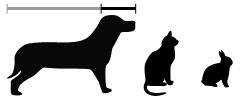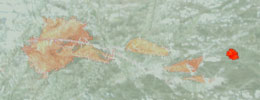Translate
Monday, August 28, 2017
Thursday, August 24, 2017
Student Blogs, Fall 2017
9:00 Class
Rhiannon Alter
Christian Ard
Jourdyn Cluver
Ashley Floyd
Cassandra Harger
Madi Hetico
Rae Hull
Coeltryn Kirkland
Vincent Lendering
Caroline McClellan
Erin Moutz
John Roberts
Emily Seaford
Stephanie Simone
Zachary Smith
Griffin Torrey
1:00 Class
Julia Ailes
Emily Brown
Karese Burrows
Heather Callahan
Matt Conner
Levi Dobson
Gabi Galban
Summer Hartenstine
Zach Jacques
Hannah Lewis
Sasha Lute
Travis May
Connor Mathews
Madison Montanus
Dani Sanders
Meghan Vargas
Rhiannon Alter
Christian Ard
Jourdyn Cluver
Ashley Floyd
Cassandra Harger
Madi Hetico
Rae Hull
Coeltryn Kirkland
Vincent Lendering
Caroline McClellan
Erin Moutz
John Roberts
Emily Seaford
Stephanie Simone
Zachary Smith
Griffin Torrey
1:00 Class
Julia Ailes
Emily Brown
Karese Burrows
Heather Callahan
Matt Conner
Levi Dobson
Gabi Galban
Summer Hartenstine
Zach Jacques
Hannah Lewis
Sasha Lute
Travis May
Connor Mathews
Madison Montanus
Dani Sanders
Meghan Vargas
Saturday, August 19, 2017
National Taiwan University of the Arts
Three students of the national taiwan university of the arts have created 100 popsicles made from polluted waters of taiwan’s lakes, rivers, beaches and ports to raise awareness on the problem of pollution. setting aside the flavor, the polluted water popsicles contain collected sewage samples that were first frozen and then preserved in polyester resin. Wrapped in packaging also designed by the team, the project highlights the contrast between what is beautiful and what is problematic for the environment.
Elements & Principles of Art
Elements of Art
Line
Shape / Form
Color
Value
Texture
Space / Perspective
Space refers to the area in which art is organized. Perspective is representing a volume of space or a 3-dimensional object on a flat surface.
Space refers to the area in which art is organized. Perspective is representing a volume of space or a 3-dimensional object on a flat surface.
Principles of art
Pattern
Rhythm / Movement
Proportion / Scale
Balance
Unity
Emphasis
Emphasis refers to the created center of interest, the place in an artwork where your eye first lands.
Emphasis refers to the created center of interest, the place in an artwork where your eye first lands.
Labels:
Elements and Principles Chart
Friday, August 18, 2017
Lauren Curtis, Student Work
Title:
Pretense
Materials:
Foam, Stonehendge paper, tracing paper, matte gel medium, glue, ink, gesso, balsa wood
Dimensions:
17" x 10" x 4"
Statement
I wanted to map a person's insecurities. I wanted to map a person who looks like they have everything together, but are really just as messed up and unsure of themselves as everyone else. I wanted it to looked graphic and organic at the same time. I wanted the front to look sleek and put together, and everything behind it to look messy and disorderly; the paper's peeling, the wood is crooked.
In process photos.
Research images:
Karen Margolis
Louise Nevelson
Carrie Dickens
How To Set Up A Blog
For this course we will use the blog format to professionally document your time in this class.
E-mail your blog address to me before the second class meeting.
How do I begin to set up a blog?
E-mail your blog address to me before the second class meeting.
How do I begin to set up a blog?
- You need a google account to set up a blog.
- Use a professional name of your blog. Try to use your proper name as you will be establishing yourself as a professional artist with the blog. Also, if I need to recommend you or your work to anyone, I can send them your blog link.
- Use blogspot.com (or may come up under blogger.com) to set up a personal blog. The 10 minute video shows you how to set up a blog and how to post information.
- Use the "simple" template (same template used in the tutorial). Do not, repeat do not, use a colored/patterned background.
- Replace stock image in header or leave blank. If you want to include an image in the background header, the image must be your own art work.
- You can use tumblr as long as you do not use the column format. No columns. You can also use another blog platform as long as it is easy to navigate and has white background.
What do I put on the class blog?
- I created a blog checklist for students. The document is in Canvas, in the File Section. The document also includes guidelines on formatting, photographing work, how to write statements and more.
When are blog postings due?
- Few of My Favorite Things, Creativity I Admire, ART 21 and Elements & Principles assignments are first day homework. Due by the second day of class. Post/publish on your blog. I will check your blog for completed work. Late work not accepted for the blog postings.
- All other blog posts (professional images of your work, in-process image, reflection statement, artist statements, research and documentation for artist talks) due during final exam day and time.
Subscribe to:
Posts (Atom)















































